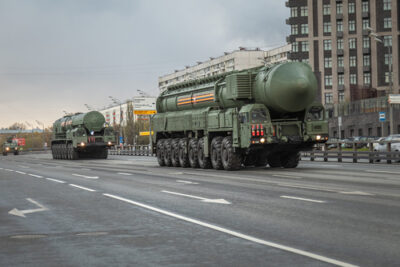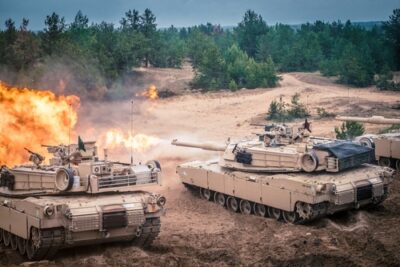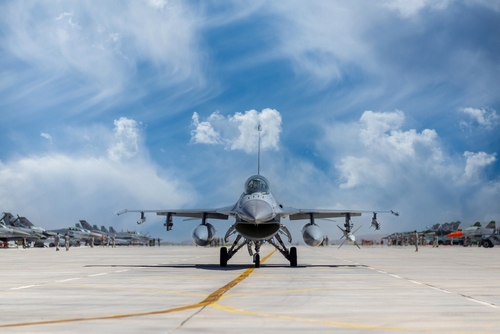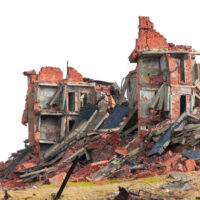Belgium (Brussels Morning Newspaper) As the Russian invasion of Ukraine began, almost a year ago now, few have expected the country to be able to resist. Ukrainian President Volodymyr Zelenskyy defied calls for his evacuation with the famous “I need ammo, not a ride” line, and called on the west to help his country with the weapons Kyiv needs to defend itself: artillery, armored vehicles, tanks, and planes.
The western leaders applauded his bravery and apparent calm expressed their utmost support for Ukraine and its people and sent helmets, rifles, and hand-held anti-air and anti-tank missiles. No artillery, no vehicles, no tanks, and no planes. Western planners expected the Ukrainian army to collapse, the Russian invasion to reach and encircle Kyiv, the Zelenskyy government to fall or evacuate, and the war in Ukraine to become a guerilla conflict against a superior occupying force. But they were wrong.
As Ukrainian forces held on, as they repelled the Kyiv offensive and stopped the invasion in its tracks, the West gradually opened to sending weapons of increasing complexity and lethality. Kyiv was provided with superior artillery systems to counter Russian artillery supremacy. Light vehicles to improve the troops’ mobility and logistics. HIMARS launchers to strike Russian ammunition depots and command posts. But the West was still reserved on sending heavy, offensive weapons such as tanks, fearing a possible escalation from Moscow.

Nuclear fears
President Vladimir Putin’s nuclear rhetoric, echoed by his hawks like former president Dmitry Medvedev, kept the West on its toes and careful not to push Putin over the (nuclear) edge. But the Kremlin has cried wolf one too many times. By the end of 2022, very few analysts still believed Russia would resort to using nuclear weapons, despite the setbacks it may experience in Ukraine.
Nuclear escalation would offer Russia no political or military advantage, and would certainly result in severing the ties with the remaining major nations not directly condemning its invasion – China and India, Russia’s most important remaining trading partners. It would also result in an escalation – probably conventional – in which NATO would be forced to respond directly to the use of nuclear weapons, either defeating Russian conventional forces or spiraling into a nuclear exchange which would affect the entire world, but also be certain to remove the Russian leadership in the Kremlin.
No longer fearing escalation, and emboldened by the Ukrainian offensives in the east and in the Kharkiv region, the West opened the doors to sending western tanks to Ukraine – the offensive weapons Kyiv needs to defend and retake its territory. The weeks before the meeting of the Ukraine Defense Contact Group in January – an alliance of some 50 countries sending military aid to Kyiv – were abuzz with negotiations on agreeing to send tanks, with Poland and the Baltic countries pressuring Germany into releasing its hold on the Leopard 2 tanks in European countries’ inventories.

Discussion on fighters
Soon after the 20 January meeting concluded, the floodgates were opened – the US and Germany pledged infantry combat vehicles, M2 Bradleys and Marders, France pledged its AMX-10 RC cavalry vehicle, Britain was the first to promise modern, main battle tanks with its Challenger 2s, which was quickly followed by pledges from Germany to send Leopard 2s and the US to send M1 Abrams tanks.
The February meeting will be dominated by the discussion on fighter jets – the sole remaining component of modern combined arms warfare that the West has so far refused to provide to Ukraine, but there are serious signs this is about to change.
No one outside of the Ukrainian military knows how many Soviet-era planes Kyiv still has. According to FlightGlobal, Ukraine had 43 MiG-29 multirole fighters, 26 Su-27 multirole fighters, and 28 Su-24 and Su-25 attack fighters. Counting Ukrainian losses recorded on the Oryx OSINT site, at least 16 MiG-29s were lost, as well as seven Su-27s and 28 Su-24s and Su-25s. Kyiv’s fleet has certainly shrunk considerably compared to its pre-war numbers.
Dominating airspace
But the airspace above Ukraine remains contested – Russia has failed to establish complete air dominance, and both sides still fly sorties, although much more limited in scope than at the beginning of the war. Both Russia and Ukraine have considerable anti-air assets available now, which makes it dangerous for jets to conduct close air support and air strike missions – which would provide the highest tactical benefit to ground troops fighting in Ukraine.
Modern, western fighter jets would enable Ukraine to slowly reassert dominance in its airspace, and to perform suppression of enemy air defense (SEAD) missions against Russian SAM systems, clearing the skies and freeing up Ukrainian jets to conduct precision strikes on Russian command posts, munitions and fuel depots, armor columns, artillery positions and many other key targets far beyond HIMARS range.
The first country to openly mention sending western jets to Ukraine was the Netherlands, which is slowly phasing out its fleet of F-16 Fighting Falcon jets in favor of fifth-generation F-35 Lightning IIs. The Dutch have stated that there are “no taboos” and that they would be willing to consider sending their F-16s if Ukraine asks for them. The Royal Netherlands Air Force has around 40 F-16 AM aircraft, older models made in the 90s, which it will replace with 44 F-35s, 26 of which are already delivered.
NATO training
Following Zelenskyy’s visit to London, Prime Minister Rishi Sunak laid the groundwork for Britain to send fighter planes to Ukraine, as part of a “long-term” effort, which would start by training Ukrainian pilots in operating “NATO airplanes”.
The UK currently has only two types of fighter jets in its inventory – the VTOL version F-35B, used by the country’s two carriers, and some 101 Eurofighter Typhoons in working order, with plans underway to retire all of its Tranche 1 models. Some of its 53 Tranche 1 units might still be refurbish-able and available to be sent to Ukraine
The Eurofighter, produced by a joint consortium formed by the European Airbus, British BAE Systems, and Italian Leonardo, is a modern 4.5-generation multirole fighter currently in service with Germany, Italy, Spain, and the UK, as well as Austria, Kuwait, Saudi Arabia, Oman, and Qatar. The four NATO nations could ostensibly reach a similar agreement as in the case of Leopard 2 tanks, and agree to each provide a smaller number of Eurofighter jets, ultimately providing Ukraine with the two squadrons – 24 fighters – that Kyiv says it needs. More than 500 Eurofighters have been produced since 1994.

Mirages on the table
French President Emmanuel Macron also stated that “nothing is off the table”, and has indicated he is willing to support Ukraine until it wins the war. France could provide Mirage 2000D or Rafale B/C fighter jets, with the country having some 68 Mirage 2000 models slated for modernization, some of which could theoretically be provided to Ukraine after refurbishment. The 102 Rafale jets, France’s latest 4.5-generation model developed after pulling out of the Eurofighter project, are the current core of the country’s air forces, and the sole delivery vehicle Paris has for delivering airborne nuclear strikes, which makes it unlikely France would provide these jets to Ukraine.
While US President Joe Biden briefly answered that Washington is not planning to send fighter jets to Ukraine, the question remains whether this is a long-term position or a temporary one. Biden was also vehemently against sending M1 Abrams tanks until German Chancellor Scholz pressured the US into joining the modern tank-sending coalition.
The F-16 is the most popular modern fighter, with 2,184 jets currently flying in the air forces of 26 countries. More than 4,600 were produced since 1978, and every sixth fighter jet on Earth today is an F-16, which means this model would be the easiest to procure and supply for Ukraine. Apart from the Dutch, several other European countries also operate the plane, including Belgium, Denmark, Greece, Poland, Portugal, and Romania, while Norway could still have available a number of F-16s it retired in January last year, also after replacing them with F-35s.
Issue of training
Sending any F-16s would require Washington to approve the transfer, which is why it’s important whether Biden is opposing sending the jets, or merely has no plans to do so at this moment. If the US would be open to sending its jets, the United States Air Force and various Air National Guard units have been replacing F-16s in their inventories with F-35s in recent years, and the US could have dozens of used planes readily available.
The greatest issue with sending jets to Ukraine is the training – not only the pilots but also the technical staff needed to maintain the planes. Every modern plane needs dozens of man-hours of service for every hour spent in flight, with the crews needing to have extensive training on the particular type of plane being flown.
Britain agreeing to train Ukrainian pilots and staff, presumably on its Eurofighters, would open the door to a wider European coalition of countries sending their Eurofighter jets to Kyiv. At the same time, the US has the logistics to organize higher-capacity training both for the pilots and the support crews, which would enable more planes to be used sooner, while F-16s would be easier to come by, to find spare parts and to replace damaged and destroyed planes.
Despite all the refusals Zelenskyy has faced in the past year, the Ukrainian President never stopped insisting, and his persistence has always paid off so far – Kyiv has received artillery, armored vehicles, anti-air systems, long-range rocket launchers, and modern battle tanks. His next request – combat jets – might not be so far off. The only question remaining is who will be the first to break the ice.



